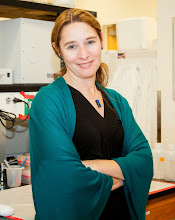As scientists we’re taught to stick to the facts, rather than to tell stories. However, facts on their own are just that – facts. Collections of information that on their own don’t come together into a larger whole, one that tells us something new about the world. To convey that bigger picture, the importance of these facts, the new ideas or conclusions we can draw from these facts, we need to tell a story.
Stories are particularly important if we’re giving a scientific talk to a lay audience. People respond to stories - just look at the success of Hollywood blockbusters or the latest book on the bestseller list. Scientist-turned-filmmaker Randy Olson talks about scientific (and Hollywood) storytelling in his book “Don’t be Such a Scientist”, where he reminds us that even science has heroes, villains, and the occasional damsel in distress.
What’s your story? Here are a few story forms that work well with scientific talks.
· Problem/solution: Convince your audience that there’s a problem, then take them through data that points to a solution. This is a common form for seminars.
· Assumption/solution1: A revision of problem/solution, you first simply assume that there is a problem, freeing up more time to work through the solution. This form is useful for specialist conferences (everyone at a cardiac conference knows that heart attacks kill), or for controversial topics (like climate change) where you want to move past the controversy and brainstorm solutions.
· Two-by-four from the left2: Lead your audience down a familiar path (such as an accepted hypothesis or model), then “hit” them with new data that leads things in a new direction.
· Hero/villain: Create a villain – this could be a person, a disease, or a problem in the field that has vexed people for years, and show how the “hero” (you, someone else, a new drug) conquers the villain. This is a great format for public talks to a lay audience.
· Character development/conflict: Is there a big conflict in your field, with groups of scientists advocating specific positions? Set up the conflict (and tell your audience about the characters), then show new data that helps settle the conflict, or steers it in a new direction. Warning: don’t use names if the “characters” are in the room, unless you are very senior or you know them well enough to gauge their reactions!
What’s your favorite way to tell a scientific story? Have you heard a great example of storytelling in action in a scientific talk? In upcoming posts we’ll look at a few of these story forms in more detail.
1Modified from Dr. Jennifer Schneider, Colorado School of Mines
2Dr. Julia Parrish, University of Washington

Good points on creating a story. I got a particular chuckle from the "Two-by-four from the left" moniker!
ReplyDeleteStorytelling is something that scientists need to work on a bit more. Pseudoscientists have this technique down pat, favoring the Hero/villain and Character development/conflict methods. Stories are engaging. They get people pulled in, their emotions hooked, and that sells the message/story you want to impart.
Thank you for posting. I have to present some data on thursday and this has given me some great ideas.
ReplyDelete